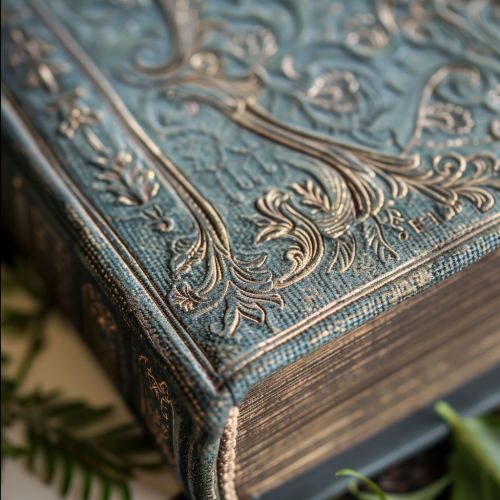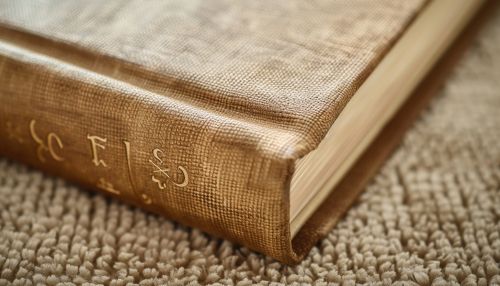Hardcover
Hardcover
A hardcover, also known as hardback or hardbound, is a book bound with rigid protective covers. They are typically made of cardboard covered with cloth, paper, or leather. Hardcovers are known for their durability and longevity, making them a preferred choice for collectors and libraries.


History
The history of hardcover books dates back to the early codices of the medieval period. Initially, books were bound using wooden boards covered in leather, often adorned with metal clasps and decorations. This form of binding was essential for protecting the valuable handwritten manuscripts.
With the advent of the printing press in the 15th century, the production of books increased significantly. The need for durable binding methods became more pronounced. By the 19th century, the modern hardcover book, as we know it, began to take shape. The use of cardboard instead of wood made the books lighter and more manageable, while still providing robust protection.
Construction
The construction of a hardcover book involves several key components:
Boards
The boards are the rigid part of the cover, typically made from thick cardboard. These provide the structural integrity of the book.
Cover Material
The cover material can vary widely. Common materials include:
- Cloth: Often used for its durability and aesthetic appeal.
- Paper: Frequently used for dust jackets or as a cheaper alternative to cloth.
- Leather: Used for high-end editions, offering a luxurious feel and added durability.
Spine
The spine of a hardcover book is crucial for its durability. It is usually reinforced with additional layers of material and may include features such as headbands and tailbands for added strength and aesthetic appeal.
Endpapers
Endpapers are the sheets of paper glued to the inside covers, connecting the text block to the boards. They can be decorative or plain, and often include the book's title or other information.
Dust Jacket
A dust jacket is a removable outer cover, usually made of paper, that protects the book from dust and damage. It often contains promotional information, summaries, and author biographies.
Advantages
Hardcover books offer several advantages over other types of binding:
- **Durability**: The rigid covers and reinforced spines provide excellent protection for the pages, making hardcovers ideal for long-term use.
- **Aesthetic Appeal**: Hardcovers often feature high-quality materials and craftsmanship, making them visually appealing and suitable for display.
- **Collectibility**: Due to their durability and aesthetic qualities, hardcovers are often preferred by collectors and bibliophiles.
Disadvantages
Despite their advantages, hardcovers also have some drawbacks:
- **Cost**: Hardcovers are generally more expensive to produce and purchase than paperbacks.
- **Weight**: The rigid covers and additional materials make hardcovers heavier and less portable.
- **Space**: Hardcovers take up more space on shelves, which can be a consideration for those with limited storage.
Market and Trends
The market for hardcover books has evolved over the years. While the rise of paperback books and e-books has impacted hardcover sales, they remain popular for certain types of publications, such as first editions, special editions, and academic texts.
In recent years, there has been a resurgence in the popularity of hardcover books, driven by a renewed interest in physical books and the tactile experience they offer. Publishers have responded by producing high-quality, visually appealing hardcovers that cater to collectors and enthusiasts.
Manufacturing Process
The manufacturing process of a hardcover book involves several stages:
Printing
The text and images are printed on large sheets of paper, which are then folded into signatures. These signatures are collated in the correct order to form the text block.
Binding
The text block is sewn or glued together, and the endpapers are attached. The boards are cut to size and covered with the chosen material. The spine is reinforced, and the text block is attached to the boards.
Finishing
The final steps include trimming the edges, adding any additional features such as headbands or ribbon markers, and attaching the dust jacket if applicable.
Preservation and Care
Proper care and preservation are essential for maintaining the condition of hardcover books. Some tips include:
- **Storage**: Store books upright on shelves, away from direct sunlight and moisture.
- **Handling**: Handle books with clean hands and avoid bending the covers or spine.
- **Cleaning**: Dust books regularly and use a soft cloth to clean covers.
